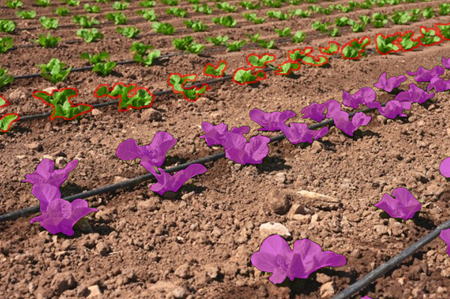Your personal data shared with us through this form will only be used for the intended purpose. The data will be protected and will not be shared with any third party.
Your personal data shared with us through this form will only be used for the intended purpose. The data will be protected and will not be shared with any third party.
Introduction
The annotation project is for the World’s leading brand in farm machinery manufacturer. The client sought our help in annotation for their artificial intelligence projects. The target client is a manufacturer of agriculture machinery, Agriculture researches and Artificial Intelligence in Agriculture industry. Previously, the Agricultural technology field has aggressively incorporated analytical insights for improving production and its efficiency. Another important part of this framework is the processing of farm data annotated with images, text and sensor information. This case study describes how the client, which has efficiently introduced an annotation approach to enhance crop tracking and yield forecasting.

Company Background
The client is engaged in the development of tools and services for the so-called precision agriculture. The company offers farmers state-of-the-art technology used in crop health and resources utilization and overall productivity. Its main product is an application for a mobile platform which provides farmers with drone images, soil information and weather conditions.
The Challenge
The client was struggling with capturing in timely and accurate way value from an immense amount of unstructured big data collected from drones and IoT sensors. The company realized that these data could not be harnessed for a logical and valuable rendition without sufficient annotation. It was observed that in order to strengthen the machine learning models used in their applications there was a dire need for a strong annotation framework.
Annotation Process
Data Collection
The first step in the annotation process involved collecting various types of data:Annotation Strategy
We are using in house annotator to perform annotation tasks. We had to adopt multi-faceted approach considering the varied requirement from the client.Tools and Technologies
The client has allowed us to use his/her customized annotation tool for carrying out the annotation tasks. We also introduced our annotators to the tool usage and QC console training to help them assess quality of annotations.
Results
The implementation of a robust annotation strategy yielded significant improvements:Key Takeaways
Conclusion
The present case study can help identify the need for annotation to develop Agrotech solutions further. The datasets, therefore, experienced better annotation, which greatly enhanced the company’s ability to apply predictive analytics to better farmers and support sustainable farming and agriculture. As it is witnessed at Agrotech, as it progresses this paper will therefore serve a key study material for other firms who wish to innovate in the agricultural segment through data management.
We began the project three years ago and it has been successfully implementing. At the moment, we are currently working for seven business units offering the client different sorts of annotation services.
Any Questions? Contact / Call / Email Us Right Away!
Get in touch